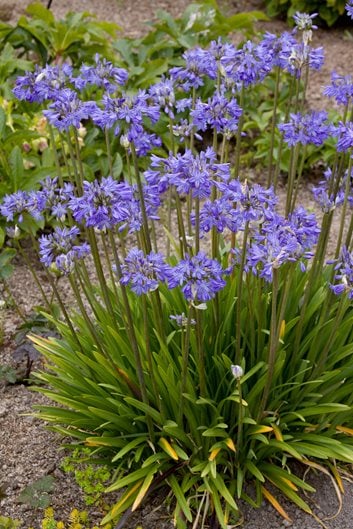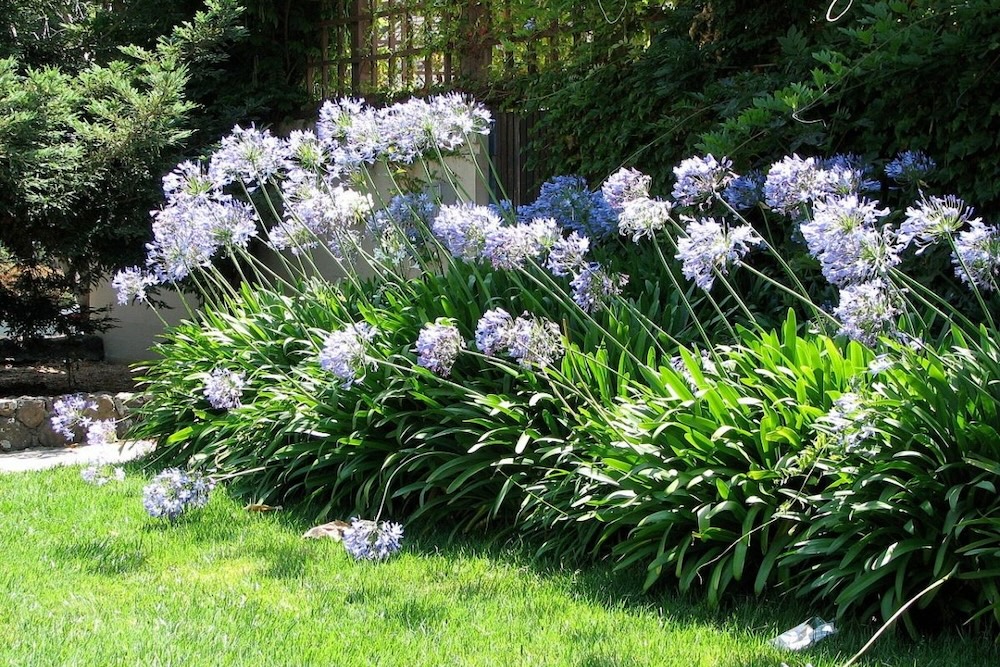Mastering the Art of Agapanthus Care: Essential Steps for Healthy And Balanced Growth and Lively Blossoms
In the realm of horticulture, the growing of agapanthus stands as a gratifying endeavor for those that seek to nurture these classy flowering plants. With their striking flowers and stylish vegetation, agapanthus has caught the attention of gardeners worldwide. Nevertheless, accomplishing ideal growth and vivid blossoms needs a nuanced approach that encompasses various necessary steps. From picking the appropriate variety to mastering trimming strategies, the trip in the direction of cultivating prospering agapanthus plants is multifaceted and holds the vital to unlocking the complete possibility of these agricultural gems.

Selecting the Right Agapanthus Selection

When choosing the right Agapanthus selection for your garden, consider aspects such as climate suitability, blossom shade, and growth behavior. Furthermore, consider the environment in your region to make certain the Agapanthus variety you pick can flourish in your specific conditions. Understanding the growth behavior of various Agapanthus varieties is crucial for correct placement within your yard.
Suitable Growing Conditions
Considering the optimal environmental needs is important for successful Agapanthus cultivation. Agapanthus plants are delicate to cool temperatures and ought to be secured from frost throughout winter season months.
To make certain healthy and balanced growth and vibrant blossoms, plant Agapanthus light bulbs at a depth of concerning 2-4 inches and area them 8-12 inches apart. Mulching around the base of the plants assists keep moisture and suppresses weed development.
Watering and Feeding Tips
Preserving proper moisture degrees and offering vital nutrients are key aspects in the treatment program for Agapanthus plants. When it comes to sprinkling Agapanthus, it is essential to strike an equilibrium. These plants prefer constantly wet soil however are prone to root rot if overwatered.
Fertilizing Agapanthus is crucial for advertising healthy and balanced development and respected blossoms. Apply a balanced plant food, such as a 10-10-10 formula, in the very early springtime as brand-new growth emerges. By complying with these watering and fertilizing tips, more helpful hints you can ensure your Agapanthus plants grow and create lively, durable blossoms.
Pruning Techniques for Agapanthus
Pruning Agapanthus plants at the appropriate times and with proper techniques is important for preserving their health and wellness and advertising ideal development and blooming. The ideal time to prune Agapanthus is in late winter or early springtime before new development emerges. Start by removing any yellowing or dead fallen leaves near the base of the plant. Cut them as close to the ground as feasible without damaging the arising shoots.
For flowered stems, wait up until the blooms have withered and afterwards cut them back to the base. This not just cleans up the plant's look however additionally motivates the growth of new blossom buds. Deadheading spent blossoms can additionally reroute the plant's power into producing even more flowers as opposed to setting seeds. However, if you want to collect seeds for proliferation, leave some blossoms to fully grown and completely dry on the plant.
Remember to utilize tidy, sharp tools to make specific cuts and decrease the danger of introducing illness. Agapanthus. Regular pruning will help maintain your Agapanthus looking cool and healthy and balanced while guaranteeing a his explanation plentiful display screen of gorgeous flowers
Dealing With Usual Insects and Conditions
After making sure correct trimming techniques for Agapanthus, it is vital to resolve usual pests and illness that can influence the health and vitality of these plants. One common insect that impacts Agapanthus is the Agapanthus gall midge.
Additionally, Agapanthus plants can endure from origin rot if they are planted in poorly draining pipes soil. By being cautious and taking timely action versus illness and pests, you can aid your Agapanthus plants prosper and create vibrant blossoms. Agapanthus.

Final Thought
In conclusion, understanding the art of agapanthus care includes picking the ideal variety, giving ideal growing conditions, proper watering and fertilizing, proper trimming techniques, and dealing with typical parasites and diseases. By complying with these necessary steps, you can make sure healthy and balanced growth and vibrant blossoms for your agapanthus plants. Remember to consistently monitor and keep your plants to advertise their general well-being and durability.
To ensure healthy and balanced development and vibrant blossoms, plant Agapanthus light bulbs at a depth why not try these out of about 2-4 inches and space them 8-12 inches apart. By adhering to these watering and feeding pointers, you can guarantee your Agapanthus plants flourish and produce vivid, resilient blossoms.
One common bug that impacts Agapanthus is the Agapanthus gall midget. Furthermore, Agapanthus plants can experience from root rot if they are planted in improperly draining dirt. By complying with these vital steps, you can make sure healthy development and dynamic flowers for your agapanthus plants.